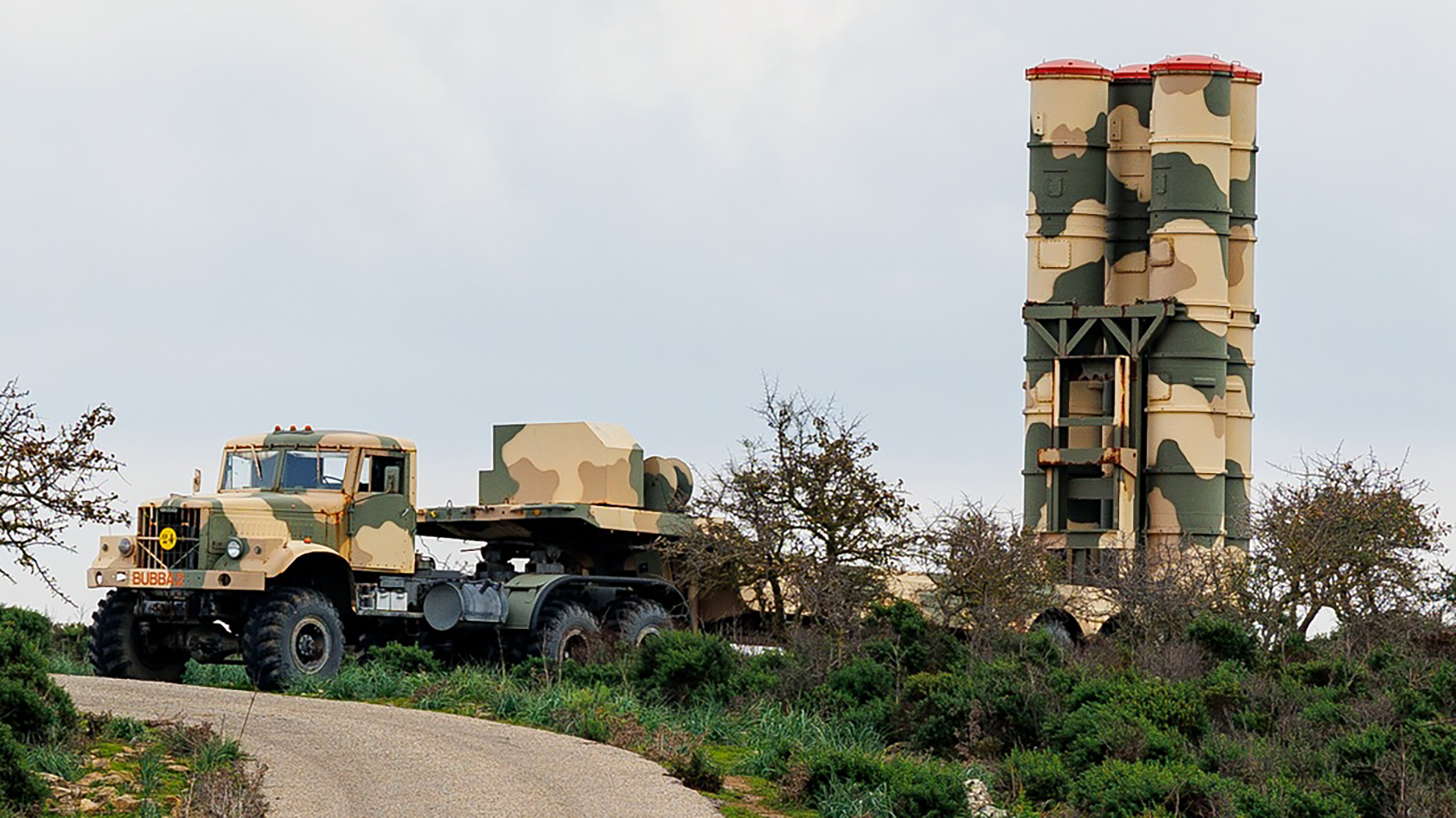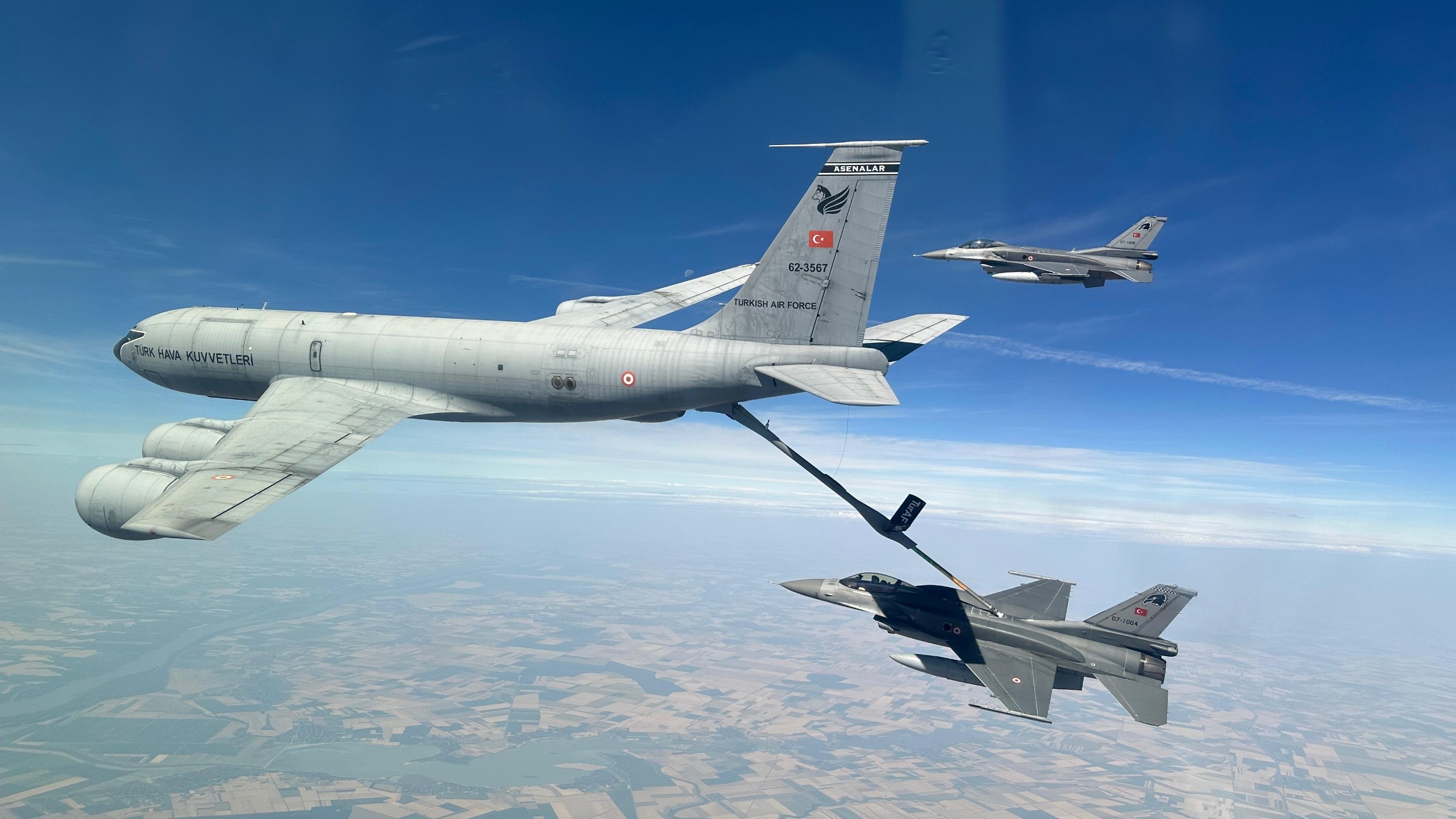EXCLUSIVE: Eyeing risk of radar ‘delays,’ Lockheed proposes new F-35 fuselage design
A letter from Lockheed Martin’s CEO to the Air Force, obtained by Breaking Defense, warns of “risks” to radar delivery schedule, raising questions about future lots.


A U.S. Air Force F-35A Lightning II aircraft assigned to the 495th Fighter Squadron maneuvers through the Mach Loop valleys, Wales, May 8, 2025. (U.S. Air Force photo by Senior Airman Seleena Muhammad-Ali)
WASHINGTON — The Pentagon has maintained that a new radar for the F-35 would be ready for the plane’s Lot 17 airframes, which began production this year. But the CEO of F-35 prime contractor Lockheed Martin has quietly warned the Air Force of “risks” in the radar’s delivery schedule, leading the defense giant to craft workarounds that currently center on Lot 20, according to a letter obtained by Breaking Defense.
To mitigate potential delays, Lockheed is proposing redesigning the aircraft’s forward fuselage to be capable of accommodating either the aircraft’s incumbent radar, the APG-81, or the new radar dubbed the APG-85. The fresh fuselage design could enter service in the program’s Lot 20 production, Lockheed CEO Jim Taiclet wrote in the letter.
The letter does not say the cause of the potential delays — stakeholders declined to tell Breaking Defense — nor does it say what the fate of the radars for Lot 17, 18 and 19 is expected to be.
JJ Gertler, a senior analyst at the Teal Group consultancy, told Breaking Defense that it appeared unlikely the APG-85 would be ready for Lot 17, though it could be the case that the radar can be incorporated into jets before Lot 20, and that Lot 20 is simply the first lot where customers could have a choice between the two radars.
“If it’s not a design issue, but a supply issue, you know, they find a supplier that can do what they need and you can get the 85 sooner. It really depends” on the reason for a potential delay, he said.
Dated March 21, the letter addressed to Air Force Chief of Staff Gen. David Allvin and marked “controlled unclassified information” says the APG-85 “risks delays,” and that the world’s largest defense contractor is “taking proactive steps to create viable options for Lot 20 aircraft if necessary.” (The APG-85, made by Northrop Grumman, is government furnished equipment that is outside of the scope of Lockheed’s F-35 contract with the Pentagon.)
Designers began drawing up the new fuselage in January and should wrap up their work in August, the letter says, a schedule that “supports a decision point” in October “to determine which radar system to include in U.S. Lot 20 production aircraft deliveries” — a clear indication officials have not yet determined what radar will go on the jet for the future lot. A new fuselage would provide a “common long-lead structure” that can “optimize production and reduce potential delays,” the letter adds.
“If the radar is not ready, it’s not ready,” a senior congressional staffer told Breaking Defense. The staffer speculated that the program would have to devise mitigation measures, such as holding aircraft at the production line — similar to a recent delivery pause over a separate delay with an upgrade known as TR-3 — or deliver the jet and install the radar, known as an active electronically scanned array (AESA), at a later date.
“Highly advanced AESA technology is hard to develop, and especially when you need a small form fit function and install it inside of a tactical fighter that then has to integrate with all the other sensors and mission systems on board,” the staffer said, who requested anonymity to discuss sensitive programmatic details. “It’s going to be very challenging for the radar to be ready for installation into Lot 17 aircraft.”
‘A Lot On The Plate’
It’s not clear if the new radar could be joined with the stealth fighter any earlier than Lot 20. Lockheed Martin referred a request for comment to the F-35 Joint Program Office (JPO). Northrop, which also supplies the APG-81, referred a request for comment to the JPO and Air Force public affairs.
Asked previously about the timeline for the radar’s integration, a spokesperson for the JPO told Breaking Defense that the APG-85 “is planned for initial fielding in Lot 17.” When asked about the letter, the spokesperson said, “Due to program security reasons, we are protecting any additional information with enhanced security measures.”
An Air Force spokesperson told Breaking Defense that the radar “represents a critical advancement to address the growing sophistication of adversary capabilities,” and that “[a]s development and integration efforts develop, it’s important to note that the current APG-81 radar remains the world’s most capable system.” Citing “enhanced security measures,” the spokesperson said that no further details are available.
One source familiar with the situation noted that Northrop had raised concerns with the aggressive schedule for the APG-85 earlier in the development process, but were overruled by the JPO and Lockheed, which were “very keen” to develop and integrate the new radar “as fast as possible.”
Northrop “initially pushed back, indicating that this is a significant technological leap and would take time,” the source told Breaking Defense. But the JPO and Lockheed “leaned on Northrop to execute at a pace that was pretty aggressive, and it’s turning out that Northrop’s initial projections are probably more accurate.”
Taiclet’s letter provides a glimpse into the highly sensitive radar upgrade underway for the aircraft as well as other steps the world’s largest defense contractor is taking to apparently mitigate potential delays for the APG-85. According to the letter, Lockheed has “initiated the advance procurement of 69 APG-81 radars,” which adds that Northrop is contributing “25 percent of the investment.”
Gertler noted that the advanced procurement approach could be a “hedge” in case the APG-85 isn’t on time, enabling production to continue smoothly. And in the event the APG-85 is on time, a stock of APG-81s would still provide spare parts for jets that currently fly with the radar.
Taiclet’s letter also suggests that the APG-85 has not yet been selected by all of the F-35’s international customers. For example, the missive says, “If a decision is made to extend this [fuselage] design to all Partners and Foreign Military Sales (FMS) countries, we would have a common structure for Partner and FMS aircraft with their APG-81 radars.” The correspondence adds that if a customer decided to integrate the radar in the future, the common fuselage “would minimize the retrofit impacts.”
Gertler told Breaking Defense that the redesign may actually offer international customers flexibility to choose between the APG-81 and the APG-85 that did not exist before. Assuming Lockheed’s proposal is able to be implemented efficiently, he described the new fuselage design idea as “a reasonable way to deal with an unforeseen circumstance.” In any event, the fuselage would likely have to be redesigned anyway to accommodate the larger APG-85, he said.
Still, Gertler raised questions about the scope of the work, such as whether Lockheed’s proposed change is limited to internal components or extends to the aircraft’s outer mold line — the latter of which would likely prompt the need for more extensive testing to verify the stealth fighter’s radar signature.
While the overall impact to the program is yet to be seen, the fact that Taiclet personally penned a letter to Allvin about the radar issue suggests it could be a significant hiccup for a program defined by delays, where stealth fighters currently being delivered are reserved for training roles until full combat capability can be delivered with the TR-3 upgrade.
“There’s just a lot on the plate, and not a lot of time to do everything,” the congressional staffer said.























































































































































